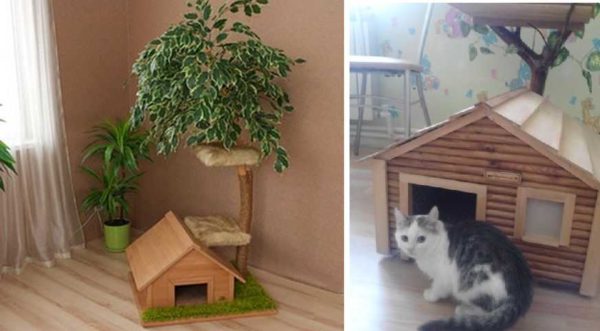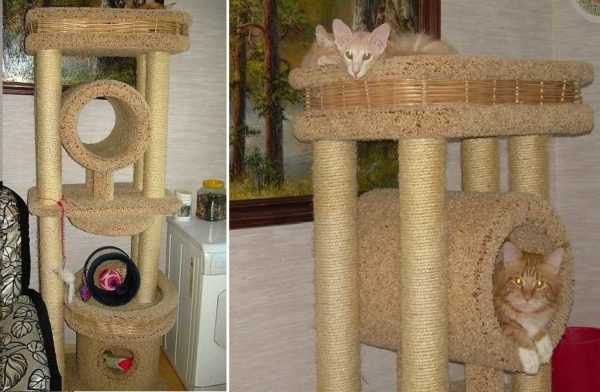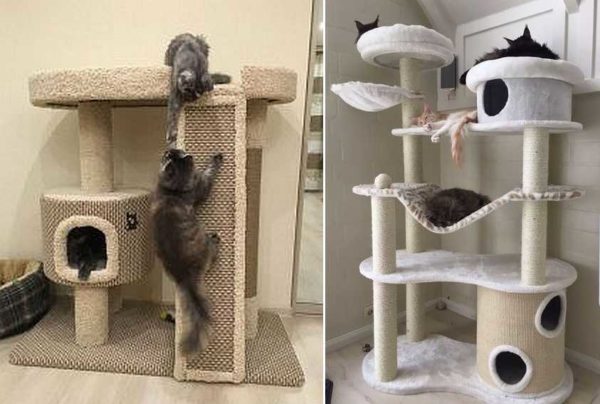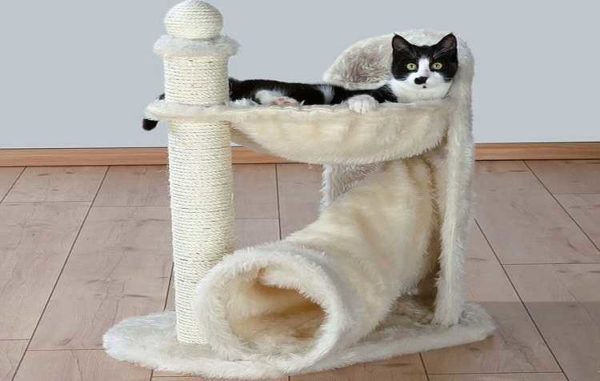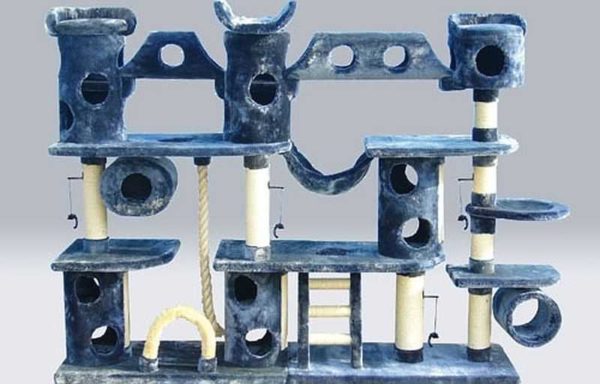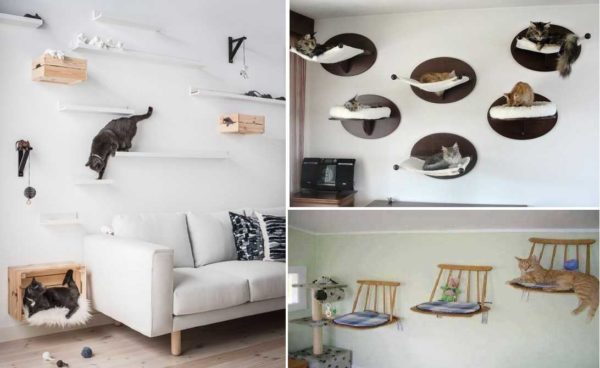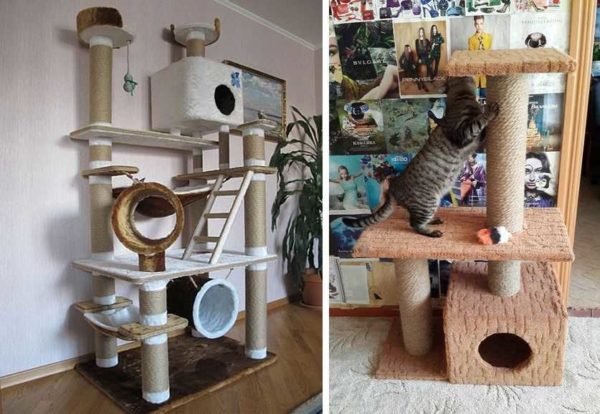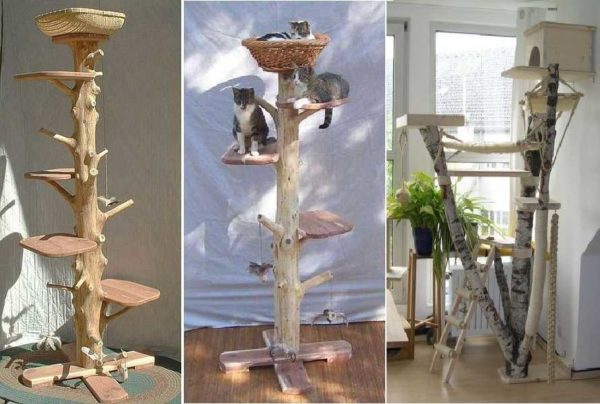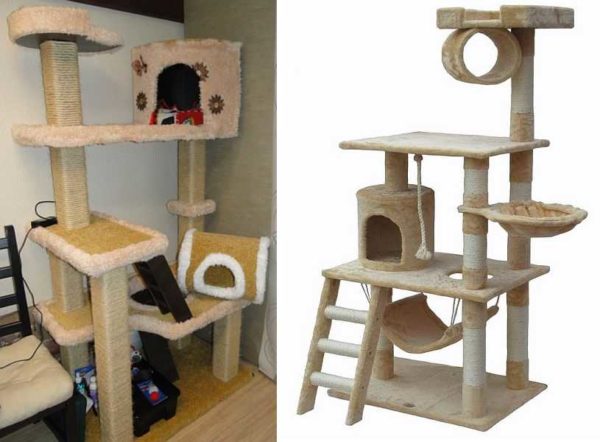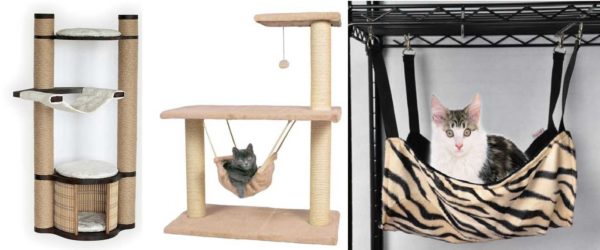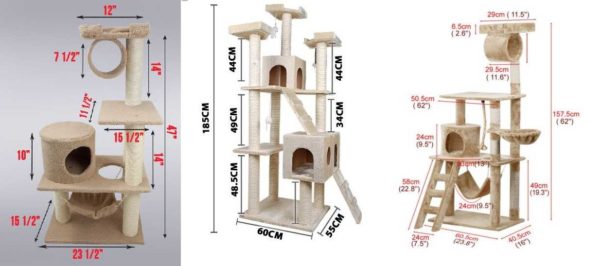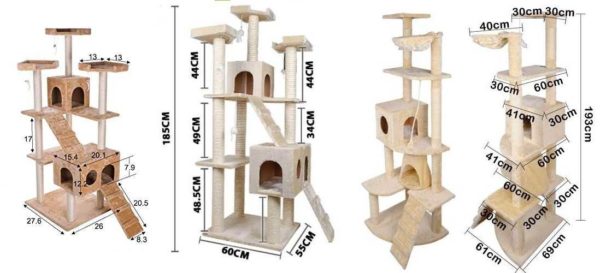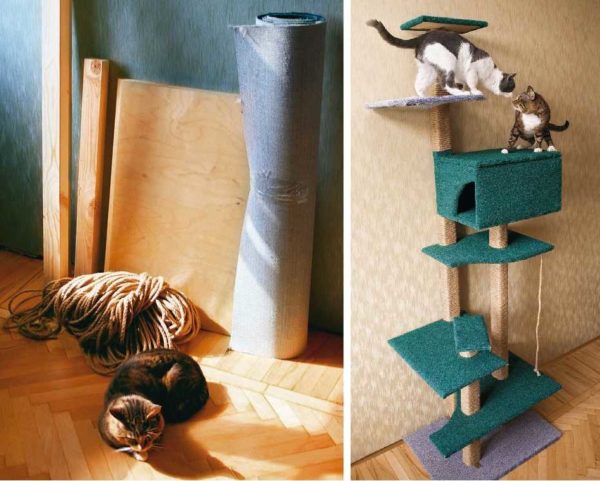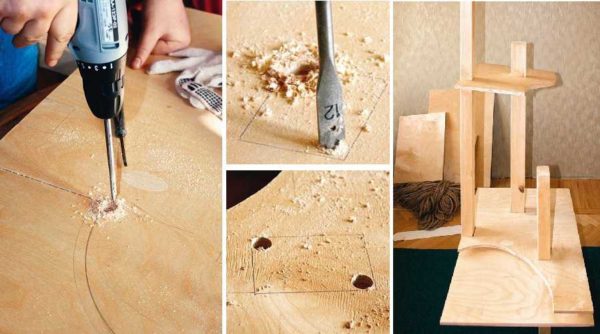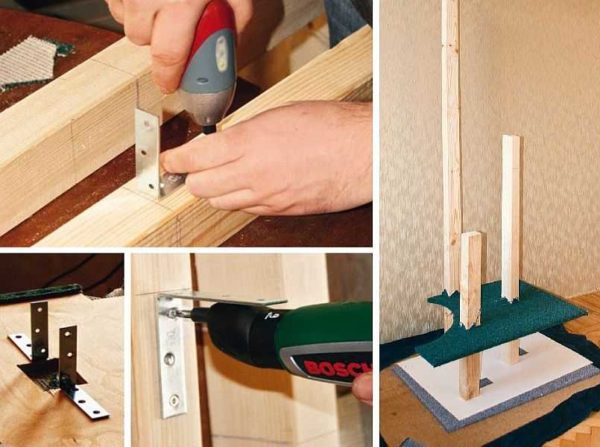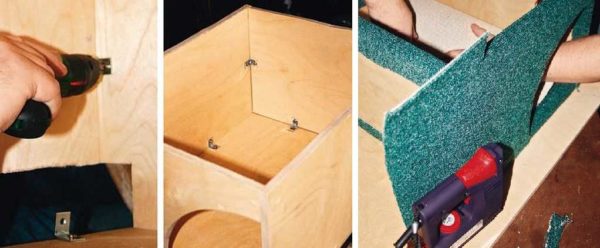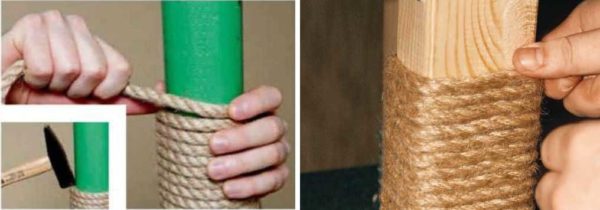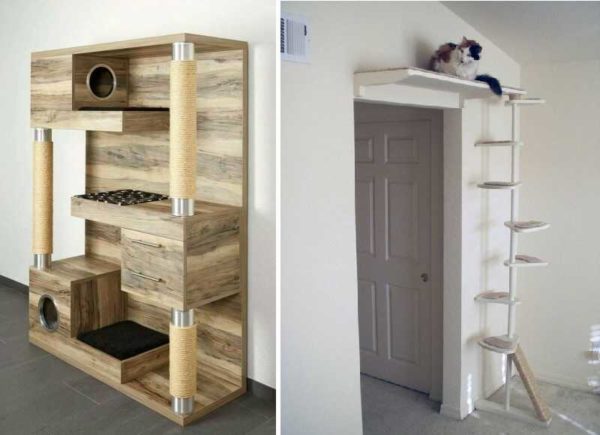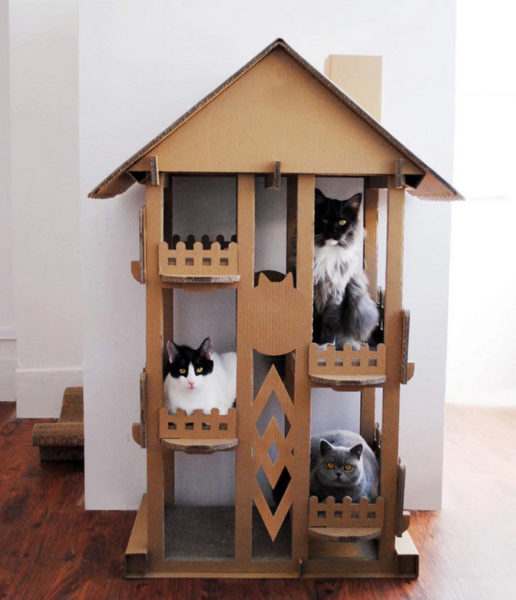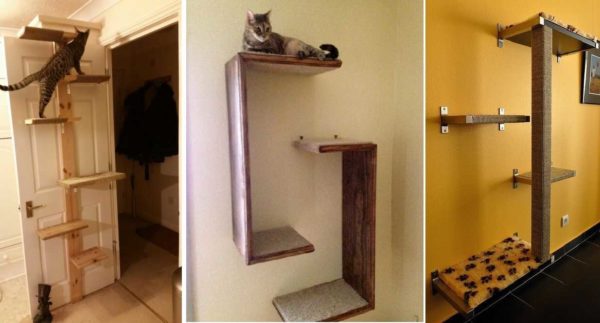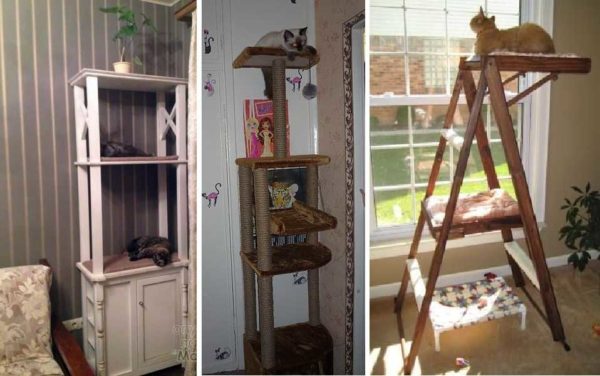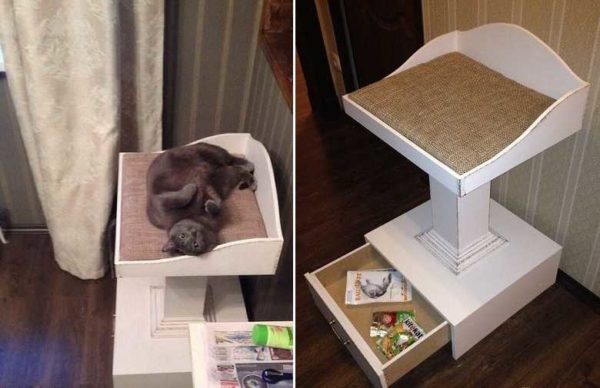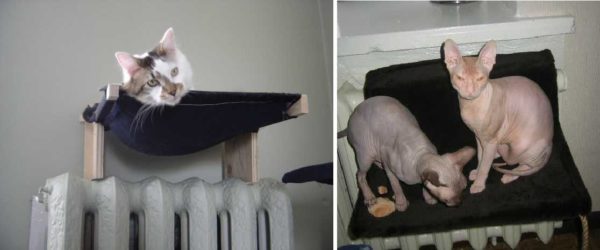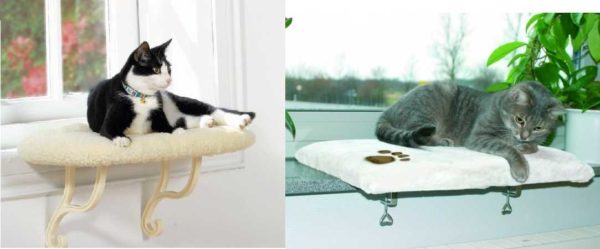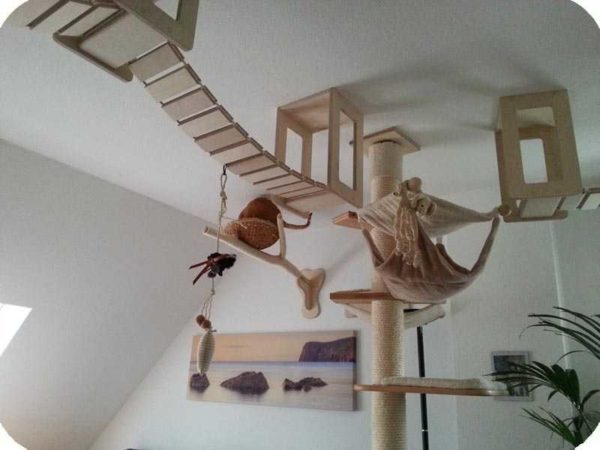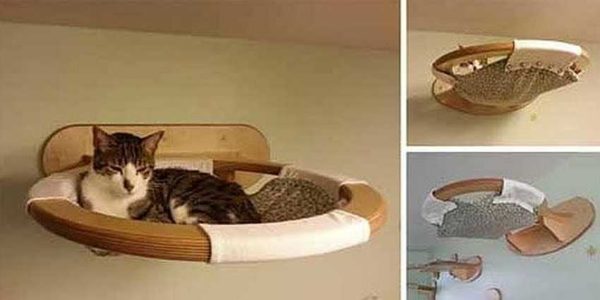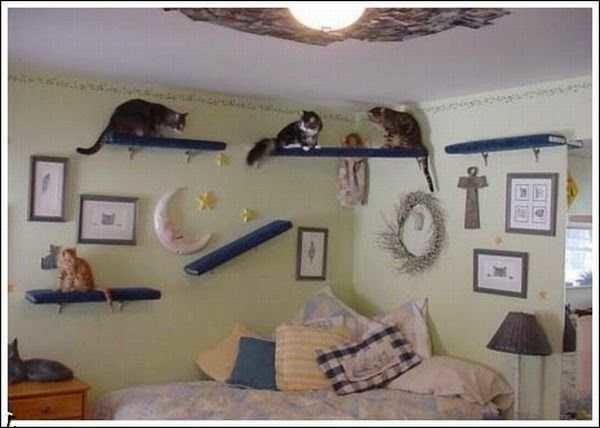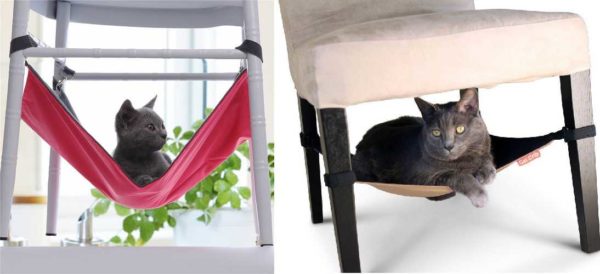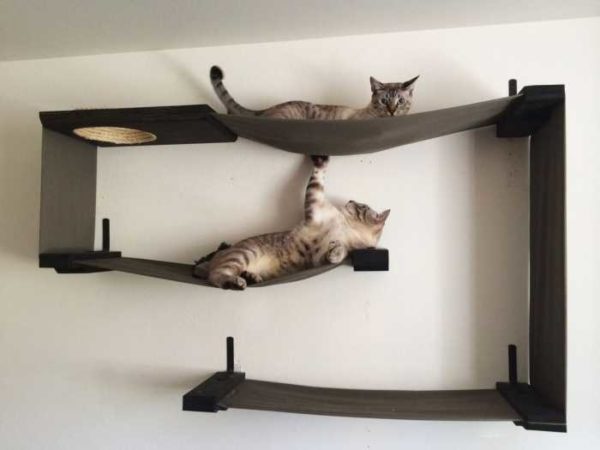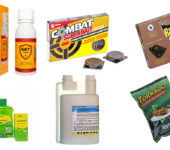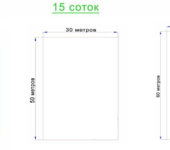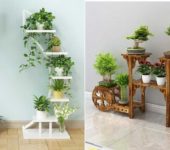DIY cat house
If your cat or cat constantly disappears in the closet, scratches the wallpaper or sofa, hides under the covers and this bothers you, try making a cat corner. A properly made house for a cat or a cat will be a favorite pastime. There are a lot of cat corners, with and without scratching posts, in stores, but this is not at all the same ... Made with your own hands and better, and more reliable ... You can develop it personally according to your pet's requests.
The content of the article
Which option should you choose?
It's not so difficult to build a house for a cat, but you need to choose the right design. After all, I want my own hand-made, actively exploited, and not just stood to collect dust. To make your cat or cat like the house, take a closer look at where the pet prefers to spend time, what it loves to do, where it prefers to rest - climbing higher or on the floor ... In general, you need to select the design of the cat's house based on the habits of your pets.
How to develop a structure
The preferences of cats and cats may differ. For example, cats prefer houses with two entrances - in case of emergency evacuation of offspring. Therefore, many people like pipes or structures similar to them. At the same time, they do not like too large a hole, since they need to feel like in a shelter. Therefore, the entrance / exit to the house must be made not too large so that the pet can easily pass into it, but no more. And one more thing: not all cats like houses that are on the floor - cats live in them with kittens. "Singles" prefer shelters at a height, although this is also not a fact, and depends on the habits of the individual.
Cats prefer to spend time at a height, watching everything that happens around them. They rarely sit in the house, but they can lie on the playgrounds for hours. If you have a cat, make more platforms, and of solid size - so that the animal can lie stretched out to its full height without the risk of falling. Railings, if needed, are only for the highest shelves and obviously not around the perimeter, but only from the back and a little from the sides. In general, males feel great on sites without any fences: there are no fences on the trees. Railings are needed more for the calmness of the owners than for cats.
And by the way, there are cats who like to sit on the playgrounds no less than cats. So they also need vantage points, as well as cat houses. You never know, maybe he will be in a bad mood and he will decide to hide from you there. So yes, we did not simplify the task with the choice, but this is exactly the case - until you try, you will not understand what your pet needs.
What to add
When the owners say "a house for a cat", they usually mean a whole cat complex, in which, in addition to the house itself, there are playgrounds and a number of additional devices. Usually one or two sites are actively used, and the rest are only rarely visited. But the fact is that you don't know in advance what your pet will like.
Scratching posts and climbing frames are useful additions for a cat's house. Scratching posts are vertical surfaces that are usually wrapped with natural fiber rope. Climbing boards are horizontal and inclined boards, along which cats can move from one level to another.Scratching posts, by the way, can also be used as climbing frames - along them the animal climbs to the upper tiers.
What else could be in a cat complex? Hammocks. Usually it is a piece of rectangular fabric, fixed on two crossbars. Another option is also possible - a rigid frame with a fabric sewn to it or a piece of fabric suspended at four corners to the platform.
Some felines also like pipes. They are sewn from fabric; for rigidity, a circle or oval made of wire is inserted into both ends. One end is fixed higher, the other is thrown down. The main thing is that a gap is visible at the end of the tunnel, otherwise you will not be able to lure the cat tighter. It turns out to be a good place for an ambush, in which some furry hunters like to spend time so much.
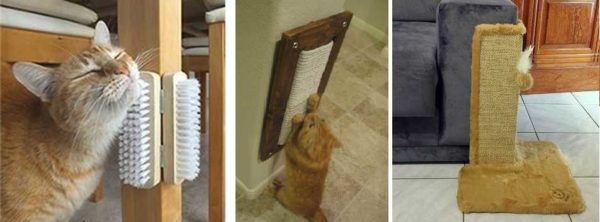
Brushes are a very handy thing to scratch and brush when the owner is not around. Scratching posts help protect furniture from cat claws - it's cheaper than buying a vandal-resistant sofa
There is another feature that cats like, but not many people know about - clothes brushes nailed to vertical surfaces at about the level of your pet's back. The bristles on the brush are artificial, medium hard. Give it a try, your pet will be happy!
Height selection
In general, the rule for cats is that the higher the better. Therefore, the height of the house that you want to make with your own hands may be the same as you are ready to make it - even to the very ceiling. And no matter how many tiers there are, most often the uppermost one will be occupied. And if there are several cats, there will be a "leader" at the top and this particular place will always be contested.
The minimum height of a cat's corner is about a meter. Such low structures are safe even for kittens, however, they grow up quickly and then want to climb higher.
Wall options
Not even the largest cat house takes up about a meter of free floor space. It is not always possible to allocate such space. For such cases, there are wall options for cat corners. Houses and playgrounds are attached to the wall in a chosen place by any available method. Where directly - with nails to the wall, somewhere with the help of brackets. Transitions are made between the fixed parts. From boards - straight and inclined, rope ladders, they stuff the rungs at a distance of 10-15 cm from each other, make steps in the form of a ladder ... In general, everything is limited only by your imagination.
Such wall corners for cats are also called shelves for cats, as the structure is very similar to traditional bookshelves. By the way, furry ones love them very much and move actively.
Choice of materials
A house for a cat, with all the additions, is usually assembled from building debris. This is quite justified, because many (or generally all) surfaces of the finished structure will be sheathed with fabric, textiles, entwined with ropes, etc. So if there are leftovers of building materials, you can use them. There are two requirements for materials (all):
- They should not have a pungent odor. In any case, one that perceives the human nose. Natural odors (wood, wool, etc.) do not count. If the material was recently purchased and the chemical odor is present, keep it outside to fade.
- Materials should not be electrified. Static discharges are very unpleasant for cats, so they do not like open plastic surfaces. Also, don't use silk.
All requirements, but there are still wishes. Do you want your cat to quickly and actively explore the house? Soak the building materials in the house for a while. They will be saturated with familiar smells and will be examined by a curious animal. The complex, made "from the materials that have been set aside" in the house, will be received with greater favor.
Base materials
If you look at the photo, a cat's house consists of different parts and they can be made from different materials. The list of basic materials is as follows:
- House (kennel): plywood, Chipboard, thin boards, weaving from twigs, weaving from newspaper tubes;
- Vertical / inclined parts:
- round - a plastic sewer pipe, a paper (cardboard) pipe on which linoleum is wound, a tree trunk, a wooden bar;
- inclined - boards, chipboard, fabric;
- Hammocks - fabrics, ropes.
- Platforms - wood, chipboard, plywood. The wood need not be sheathed. It is enough to grind it (the best option from the point of view of cats), can be varnished with water-based varnish or soaked with wood oil. Chipboard and plywood will have to be sheathed with textiles.
Only the trunk of a tree, as a material for a cat complex, requires explanations. Everything is literal: take a tree, peel the bark if it falls. You use the branches as stands for placing houses, playgrounds, baskets.
How to sheathe
A twisted rope made of natural fibers is suitable for arranging scratching posts: jute, linen, hemp, sesal, etc. Take a thicker diameter and several tens of meters at once - if the base is not wooden, you will have to wrap all the pipes with rope.
Shelves and houses are sheathed with dense material with a short pile, usually carpet. The shorter and denser the pile, the better. Long and shaggy ones only look good, and while new ones - over time, dust, wool, various debris are stuffed in them, and a cat's house becomes the cause of allergies (yours or felines').
The color of the upholstery is generally unimportant for cats - they do not react to colors. Therefore, you can choose "for the interior", the most "practical" color, the color of the pet's fur, contrasting with the cat's fur ... any.
Mount
To make a DIY cat house safe, you should think about fasteners. It is undesirable to use self-tapping screws, since wool can cling to them, and staples should not be used - they can be dangerous for the claws (both types of fasteners are suitable if they are covered with upholstery). There are, in fact, only two types of fasteners: glue and nails, and the glue is only PVA. Cats tolerate it normally, as after drying it does not smell. Ropes and upholstery are glued to it, and shelves, houses and everything else are nailed.
You can also make it safe to use self-tapping screws. Drill a hole under the cap with a diameter greater than the diameter of the cap, install the fasteners, cover with putty. Yes, just like making furniture, but what you can't do for the safety of your pet.
And one more thing: if the cat complex turned out to be too high, it is better to fix it. To the floor or to the wall, or to the floor and to the wall. Otherwise, there may be problems - there were cases when cats brought down the structure.
Photo with dimensions
No matter how much they talk about the device of a house for a cat, it is best to understand the dimensions by drawing with dimensions. If you look at them closely, you will notice a solid run. This is understandable - cats are large and small, respectively, and the size of the cat's house will be larger / smaller. You can adjust them yourself depending on the size of your pets or the available space.
The height of the structures presented is rather big - 180 cm and higher, but you can reduce it by removing the floors that are unnecessary in your opinion. All these dimensions can be taken as a basis to develop your own layout, put down approximate dimensions. Having a drawing in hand, you can start purchasing materials and manufacturing.
Instructions for making a house for two cats
The family has two cats. The older one is an aggressor cat and the younger one is more mobile.Therefore, the design was designed so that the younger could hide on the highest platform, and the older, due to his weight, could not get there. They decided to place the house high, as both cats prefer height. They made it larger in size so that both individuals could be there at the same time.
For this construction, thick furniture plywood (12 mm) with a size of 75 * 50 cm, posts from a bar 50 * 70 (4.2 m), a jute-based carpet - 1 * 2.5 meters, 20 meters of rope were purchased. Fasteners - corners. For a house - 15 * 20 mm, for mounting platforms - 40 * 45 mm, 55 * 20 and 35 * 40 - for insurance, and a couple of large ones - for mounting to the wall.
We prepare platforms and fasten to the posts
There are three pillars in the selected design: one 220 cm, the second 120 cm and the third 80 cm. They will be attached to the plywood sheet base. On the base, you need to place the pillars so that the longest one is closer to the wall. In order not to be confused, when marking on a sheet, using a ruler and a pencil, we first drew a stencil on paper, on which the arrangement of the pillars relative to each other was applied. The markup for the installation of the pillars was transferred from the finished layout. They were fastened with long nails through the base (4 pieces each), having drilled holes of slightly smaller diameter in the plywood. Then they were fixed outside with 55 * 20 corners for a large pillar and 35 * 40 for smaller ones.
Using the same template, the place of passage of the pillars was marked on the platforms, then holes were cut out for them according to the marking. To do this, they took a 12 mm feather drill, drilled in the corners marked for the installation of squares, holes into which the jigsaw blade perfectly fits. From experience: it is better to make the slots for the posts a millimeter or two more. The platforms are still held by the corners, and if you make the slot too small, it takes a long time to modify it with a file or sandpaper.
Before installing the platform, "try on", if necessary, adjusting the slots. Putting the platform horizontally (using the building level) at the required level, mark with a pencil where the platform is. Then we set the corners according to this marking, so that we make clear marks on all four sides. When all platforms are properly installed, we cover them with carpet.
House body assembly
Two pieces of plywood 75 * 50 cm were cut into 4 rectangles. They made a roof, a floor and two side walls. When making one of the shelves, a piece of plywood with a semicircular hole on the side remained. It was decided to make it an "entrance", and the back wall was cut out of one of the pieces. It remains to assemble the house, which is not difficult at all. Small metal corners were used, which were fastened with short self-tapping screws.
Before covering the house with a roof, it was knocked down from the inside, thus the fasteners were closed and increased comfort. It is not so convenient to work inside the case, but it can be done. The roof was knocked off from both sides, after which it was fixed using the same corners, but placing them outside. Not very pretty, but not fatal. The finished house was fixed in the place assigned to it. The corners again helped out, but larger ones - 35 * 40 mm.
We wrap the pillars
The last stage - we wrap the posts, making a scratching post. The easiest way to secure the rope to the post is with staples. A few staples and you're done. Further, tightly pressing one turn to the other, we wrap the posts in a spiral. We reach the obstacle, again fasten the rope with brackets and continue on to the next section.
From experience, I must say that no matter how hard they tried, the turns of the rope did not fit one to the other very tightly, over time, they "got used to" and began to "ride" up / down a little. Having carried out the work with mistakes, we found a way: after laying several turns, we knock them down with a hammer. It's simple, but if I knew in advance ... That's all, we made a house for the cat with our own hands.It took about 6 hours.
A similar design is discussed in the video below.
House out of the box and T-shirts in two minutes
For the simplest and cheapest option, a minimum of "ingredients" is required:
- Suitable size cardboard box;
- Old T-shirt;
- Wide tape.
Of the tools, you only need a mounting knife and scissors.
Photos of interesting cat houses / complexes
Living next to us for years, cats become not easy pets, but family members. I would like to create all the conditions for comfort for them, so the owners are trying, coming up with more and more new devices / designs. We have collected some interesting ideas in this section.
Additional video ideas
House with a periscope and a scratching post for the cat Ryzhik.
Option using PVC pipes with a diameter of 100 mm.


